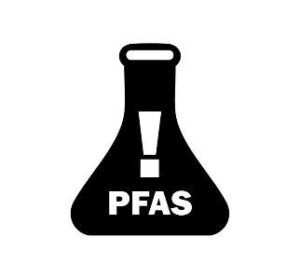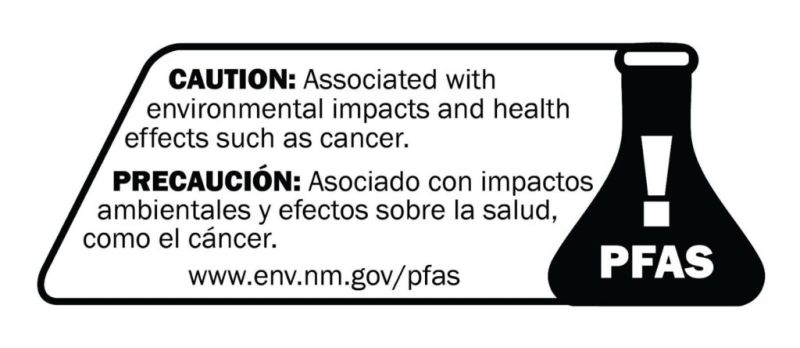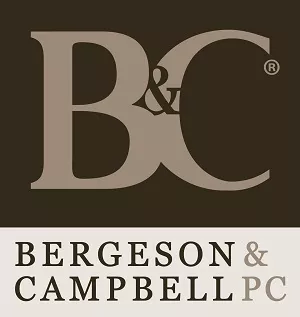- within International Law, Real Estate and Construction and Strategy topic(s)
Following up on the New Mexico Environment Department's (NMED) September 25, 2025, webinar on a labeling requirement for products containing intentionally added per- and polyfluoroalkyl substances (PFAS), NMED announced on October 8, 2025, that it has petitioned New Mexico's Environmental Improvement Board (EIB) to adopt a proposed rule to implement the PFAS Protection Act. According to NMED's press release, the proposed rule would "implement the full scope of the PFAS Protection Act, including phasing out and prohibition on the sale of consumer products containing intentionally added PFAS, establishing consumer-facing labels for products which contain intentionally added PFAS, and the reporting requirements for the manufacturers of such products." If passed by EIB, the rule would take effect July 2026. NMED will hold an informational webinar on October 22, 2025. During the webinar, NMED will provide an overview of the rulemaking process and timeline, communicate opportunities for public input, and respond to questions. Comments on the proposed rule are due March 31, 2026, by 4:00 p.m. (MST). NMED has created a web page compiling all PFAS Protection Act material, including a link to the proposed rule and draft labels.
Definitions
The statute includes definitions for certain terms, including:
Intentionally added means "a per- or poly-fluoroalkyl substance deliberately added or used during the manufacture of a product where the continued presence, at any level or concentration, of the per- or poly-fluoroalkyl substance is desired or expected in the final product or one of the product's components"; and
Manufacturer means:
(1) a person, a firm, an association, a partnership, a corporation, an organization or a combination or a joint venture that creates, produces or assembles a product or whose brand name is affixed to a product; or
(2) in the case of a product imported into the United States, an importer or first domestic distributor of the product; provided that the entity or person that created, produced or assembled the product or whose brand name is affixed to the product does not have an office or employees in the United States.
The proposed rule would fill in several definitions not included under the PFAS Act, including:
- Complex durable good means "a product that is a manufactured good composed of 100 or more manufactured components, with an intended useful life of five or more years, where the product is typically not consumed, destroyed, or discarded after a single use";
- Consumer packaging means "packaging constituting, with its contents, a sales unit to the final user or consumer at the point of retail. Also referred to as retail packaging, sales packaging, or primary packaging"; and
- Retailer means "any person or business that sells or otherwise provides products containing intentionally added per- and poly-fluoroalkyl substances in New Mexico, including persons who sell directly to consumers and persons who sell to others for resale by any means, including via the internet."
Prohibitions on Products Containing PFAS
The product prohibitions in the proposed rule reflect the statute. In New Mexico, beginning January 1, 2027, a manufacturer may not sell, offer for sale, distribute, or distribute for sale the following products containing intentionally added PFAS:
- Cookware;
- Food packaging;
- Dental floss;
- Juvenile products; and
- Firefighting foam.
Beginning January 1, 2028, a manufacturer may not sell, offer for sale, distribute, or distribute for sale the following products containing intentionally added PFAS:
- Carpets or rugs;
- Cleaning products;
- Cosmetics;
- Fabric treatments;
- Feminine hygiene products;
- Textiles;
- Textile furnishings;
- Ski wax; and
- Upholstered furniture.
Beginning January 1, 2032, products containing intentionally added PFAS that are not exempt under New Mexico's statute will be banned unless the use of the PFAS is determined to be a currently unavoidable use (CUU).
Exemptions
The exemptions in the proposed rule are those in the statute:
- A product for which federal law governs the presence of a PFAS in the product in a manner that preempts state authority;
- Used products offered for sale or resale;
- Medical devices or drugs and the packaging of the medical devices or drugs that are regulated by the U.S. Food and Drug Administration (FDA), including prosthetic and orthotic devices;
- Cooling, heating, ventilation, air conditioning, or refrigeration equipment that contains intentionally added PFAS or refrigerants listed as acceptable, acceptable subject to use conditions, or acceptable to narrowed use limits by the U.S. Environmental Protection Agency (EPA) pursuant to the Significant New Alternatives Policy (SNAP) Program, 40 C.F.R. Part 82, Subpart G and sold, offered for sale, or distributed for sale for the use for which the refrigerant is listed pursuant to that program;
- A veterinary product and its packaging intended for use in or
on animals, including diagnostic equipment or test kits and the
veterinary product's components and any product that is a
veterinary medical device, drug, biologic, or parasiticide or that
is otherwise used in a veterinary medical setting or in veterinary
medical applications that are regulated by or under the
jurisdiction of:
- FDA;
- The U.S. Department of Agriculture (USDA) pursuant to the
federal Virus-Serum-Toxin Act; or
- EPA pursuant to the Federal Insecticide, Fungicide, and Rodenticide Act (FIFRA), except that any such products approved by EPA pursuant to that law for aerial and land application are not exempt from this section;
- FDA;
- A product developed or manufactured for the purpose of public health or environmental or water quality testing;
- A motor vehicle or motor vehicle equipment regulated under a federal motor vehicle safety standard, as defined in 49 U.S.C. Section 30102(a)(10), except that the exemption does not apply to any textile article or refrigerant that is included in or as a component part of such products;
- Any other motor vehicle, including an off-highway vehicle or a specialty motor vehicle, such as an all-terrain vehicle, a side-by-side vehicle, farm equipment, or a personal assistive mobility device;
- A watercraft, an aircraft, a lighter-than-air aircraft or a seaplane;
- A semiconductor, including semiconductors incorporated in electronic equipment, and materials used in the manufacture of semiconductors;
- Non-consumer electronics and non-consumer laboratory equipment not ordinarily used for personal, family, or household purposes;
- A product that contains intentionally added PFAS with uses that are currently listed as acceptable, acceptable subject to use conditions, or acceptable subject to narrowed use limits in EPA's rules under the SNAP Program; provided that the product contains PFAS that are being used as substitutes for ozone-depleting substances under the conditions specified in the rule;
- A product used for the generation, distribution, or storage of electricity;
- Equipment directly used in the manufacture or development of the products listed above;
- A product for which EIB has adopted a rule providing that the use of PFAS in that product is a CUU; or
- A product that contains fluoropolymers consisting of polymeric substances for which the backbone of the polymer is either a per- or polyfluorinated carbon-only backbone or a perfluorinated polyether backbone that is a solid at standard temperature and pressure.
CUUs
Under the proposed rule, initial CUU proposals would be due no sooner than 60 months and no later than 12 months prior to the applicable sales prohibition. CUU proposals for sales prohibitions taking effect January 1, 2027, would be due no later than October 31, 2026. According to the proposed rule, NMED would consider complete CUU proposals for sales prohibitions effective January 1, 2027, that are received by October 31, 2026, and would issue a final determination of whether to approve or deny the proposals by March 1, 2027. According to the proposed rule, NMED would consider CUU determinations made by other states.
CUU determinations would expire three years after approval. Upon expiration, all sales, offers for sale, distributions, or distributions for sale would be immediately prohibited. If a person believes the CUU remains, they may submit a proposal to NMED for a new CUU determination. That proposal must include a description of any changes since the time of the first CUU determination and a summary of efforts made during that time to develop or discover alternatives or to make existing alternatives reasonably available. NMED would consider all subsequent proposals no sooner than 24 months prior to and no later than 12 months prior to the expiration date of the determination in effect.
Reporting
Under the statute, on or before January 1, 2027, New Mexico will require manufacturers of products containing intentionally added PFAS to report certain information, including:
- A brief description of the product, including a universal product code (UPC), stock keeping unit (SKU), or other numeric code assigned to the product;
- The purpose for which the PFAS is used in the product;
- The amount of each PFAS in the product, identified by its Chemical Abstracts Service Registry Number® (CAS RN®) and reported as an exact quantity determined using commercially available analytical methods or as falling within a range approved for reporting purposes by NMED;
- The name and address of the manufacturer and the name, address, and phone number of a contact person for the manufacturer; and
- Any additional information requested by NMED as necessary.
In the case of official reporting, the proposed rule states that "manufacturers" would refer to inpidual manufacturers, as well as groups reporting on behalf of other manufacturers. The proposed rule would allow a manufacturer to submit the information required for reporting on behalf of another manufacturer. A trade organization representing the manufacturer or group of manufacturers would also be able to submit the information required for reporting if certain requirements are met.
The proposed rule would establish the following reporting ranges:
- Less than 100 parts per million (ppm) (0.01 percent);
- Equal to or more than 100 ppm (0.01 percent), but less than 500 ppm (0.05 percent);
- Equal to or more than 500 ppm (0.05 percent), but less than 1,000 ppm (0.1 percent);
- Equal to or more than 1,000 ppm (0.1 percent), but less than 5,000 ppm (0.5 percent);
- Equal to or more than 5,000 ppm (0.5 percent), but less than 10,000 ppm (1.0 percent); or
- Equal to or more than 10,000 ppm (1.0 percent).
The proposed rule would allow NMED to enter into, modify, or dissolve an agreement with one or more states or political subpisions of a state to collect information and may accept information to a shared system as meeting the information required.
Labeling
Under the proposed rule, after January 1, 2027, a manufacturer would not be allowed to sell, offer for sale, distribute, or distribute for sale a product containing intentionally added PFAS unless the manufacturer does one of the following:
- Labels the product in accordance with the standards set forth in the proposed rule; or
- Documents that the product is labeled in a manner consistent with corresponding labeling requirements enacted by another state.
Used products would be exempt from the labeling requirement.
Labeling Standards
Prior to sale of a product that contains intentionally added PFAS, the manufacturer of the product would be required to affix or cause to be affixed, a label that conforms to the following requirements:
- The label must clearly inform the consumer, using words and symbols approved by NMED, that the product contains intentionally added PFAS in both English and Spanish. The label must be affixed to the product such that the label is clearly visible and legible prior to sale. The label must be displayed with such conspicuousness as compared with other words, statements, design, or devices on the product as to render the label likely to be seen, read, and understood by an ordinary inpidual under customary conditions of purchase or use. Text must be no smaller than the largest font used for other consumer information on the product.
- Labels affixed to products must be printed, mounted, molded, engraved, embossed, or otherwise affixed using materials and methods that are sufficiently durable to remain legible for the useful life of the product.
- If the product is sold in consumer packaging that obscures the label on the product, then the consumer packaging must be labeled. In addition, consumer packaging must also include the web address for https://www.env.nm.gov/pfas/, a web page hosted by NMED that provides information about PFAS in products, or a quick response (QR) code or other machine-readable code that provides information for https://www.env.nm.gov/pfas/. If, prior to sale, a retailer re-packages the labeled product, then the retailer must label the new consumer packaging.
- Where the consumer is unable to view the labels on the product or consumer packaging at the time of purchase or receipt, the manufacturer or retailer would be required to provide, prior to sale or distribution, information to the prospective consumer that the product contains intentionally added PFAS by providing a label or disclosure and https://www.env.nm.gov/pfas/. Disclosure and the website address would be required to be included on sales literature, web pages, product specification sheets, and marketing materials, as applicable.
- The manufacturer would be required to apply any product and package labels required unless the wholesaler or retailer agrees with the manufacturer to accept responsibility for such application.
Labeling of Complex Durable Goods with Intentionally Added PFAS
Prior to sale of a complex durable good that contains intentionally added PFAS or components that contain intentionally added PFAS, the manufacturer would be required to conform to the following information requirements:
- A symbol approved by NMED accompanied by a statement indicating the presence of intentionally added PFAS and/or component parts with intentionally added PFAS would be required to be included in the specification sheet and other product labeling information available to potential consumers prior to purchase. The proposed rule states that the following wording is acceptable: "This product is made with PFAS or contains component parts made with PFAS. PFAS are a family of chemicals, exposure to which are associated with negative health and environmental effects. For more information on the location of components made with PFAS, review the product's operation and maintenance manual."
- The statement must also be included in Spanish and include the address for https://www.env.nm.gov/pfas/ or a QR code or other machine-readable code for https://www.env.nm.gov/pfas/.
- The statement must be easily identified and legible on the specification sheet and other information available to potential consumers prior to purchase. A ten-point font or larger is presumed to be legible.
- The operation and maintenance manual associated with the complex durable good must include a statement indicating the presence of intentionally added PFAS and/or component parts with intentionally added PFAS, using words and symbols approved by NMED, followed by a complete list of components with intentionally added PFAS, including sufficient detail about the components' locations within the complex durable good such that they can be readily located.
Draft Labels
NMED has provided examples of draft label symbols and language for products. The draft label for products is below:

The draft label for product packaging is below:

NMED notes that these graphics are not final and may change before adoption of the final rule.
Consistency with Other States
The proposed rule would allow a manufacturer of a product with intentionally added PFAS to comply with the labeling requirement by labeling all units of the product sold in New Mexico in compliance with corresponding requirements adopted by another state. A manufacturer would have to provide the following to NMED:
- A copy of the label as it will appear on products and consumer packaging sold in New Mexico and a narrative explaining how it fulfills the intent of the requirements established in the rule; and
- If the approved labeling plan includes state-specific elements such as telephone numbers, statutory references, websites, or public outreach measures, a description of the adjustments that will be made to implement the plan in New Mexico.
Waiver of the Labeling Requirement
Under the proposed rule, NMED may waive the obligation of a manufacturer to label a product if the product is exempt from the reporting and prohibition requirements and none of the product's material containing intentionally added PFAS will ever come into direct contact with a consumer while the product is being used as intended during the useful life of the product.
Commentary
Although NMED describes its submission of the proposed rule to EIB as "the first step in a lengthy rulemaking process," NMED intends for the rule to take effect in July 2026. That will leave manufacturers only six months to comply with the reporting and labeling requirements. Due to the July 1, 2026, reporting requirement in Minnesota, companies should have the required information, As we noted in our September 26, 2025, blog item, Minnesota's reporting rule may be delayed, however, due to the requirement that the Minnesota Pollution Control Agency (MPCA) assess the cumulative effect of the proposed reporting rule with the Toxic Substances Control Act (TSCA) Section 8(a)(7) reporting requirement for PFAS. Whether information reported to Minnesota will be publicly available by January 1, 2027, is anyone's guess.
The enacted statute states that EIB "may" adopt rules to carry out the provisions of the PFAS Protection Act, "including requiring the labeling of products in English and Spanish." The proposed labeling requirement would state not just that intentionally added PFAS are present, but would include a link to https://www.env.nm.gov/pfas/, a web page developed and maintained by NMED on intentionally added PFAS in products. As we reported in our September 29, 2025, blog item, Connecticut recently held a comment period on a draft order regarding its July 1, 2026, labeling requirement for certain consumer products. Connecticut's labeling requirement would apply only to the following products containing intentionally added PFAS: apparel; carpets or rugs; cleaning products; cookware; cosmetic products; dental floss; fabric treatments; juvenile products; menstruation products; textile furnishings; ski wax; or upholstered furniture. Under Connecticut's proposed order, the label would need to state only "Contains PFAS" or "Made with PFAS," and there is no requirement that the language also be provided in Spanish. This makes it appear unlikely that NMED would approve labels that meet Connecticut's requirements.
One of the deficiencies that the Minnesota administrative law judge (ALJ) found in MPCA's proposed reporting rule involved the $1,000 reporting and $500 updating fees. According to the ALJ, MPCA's numbers showed that it would generate between $22,500,000 and $45,000,000 in fees. NMED's proposed rule includes a $2,500 fee for initial reports and $1,000 for each subsequent report.
Stakeholders should review the proposed rule and plan to attend NMED's October 22, 2025, webinar. As onerous as state labeling and reporting requirements may be, having to comply with different requirements only makes a complicated process more difficult.
The content of this article is intended to provide a general guide to the subject matter. Specialist advice should be sought about your specific circumstances.



